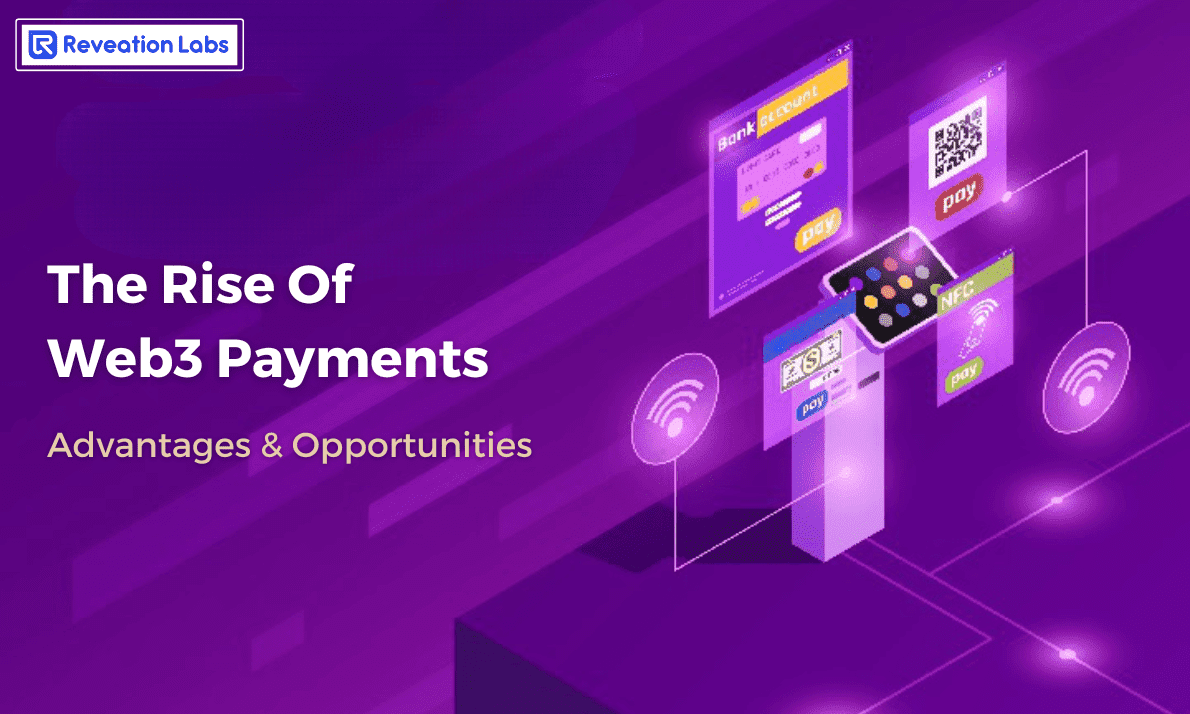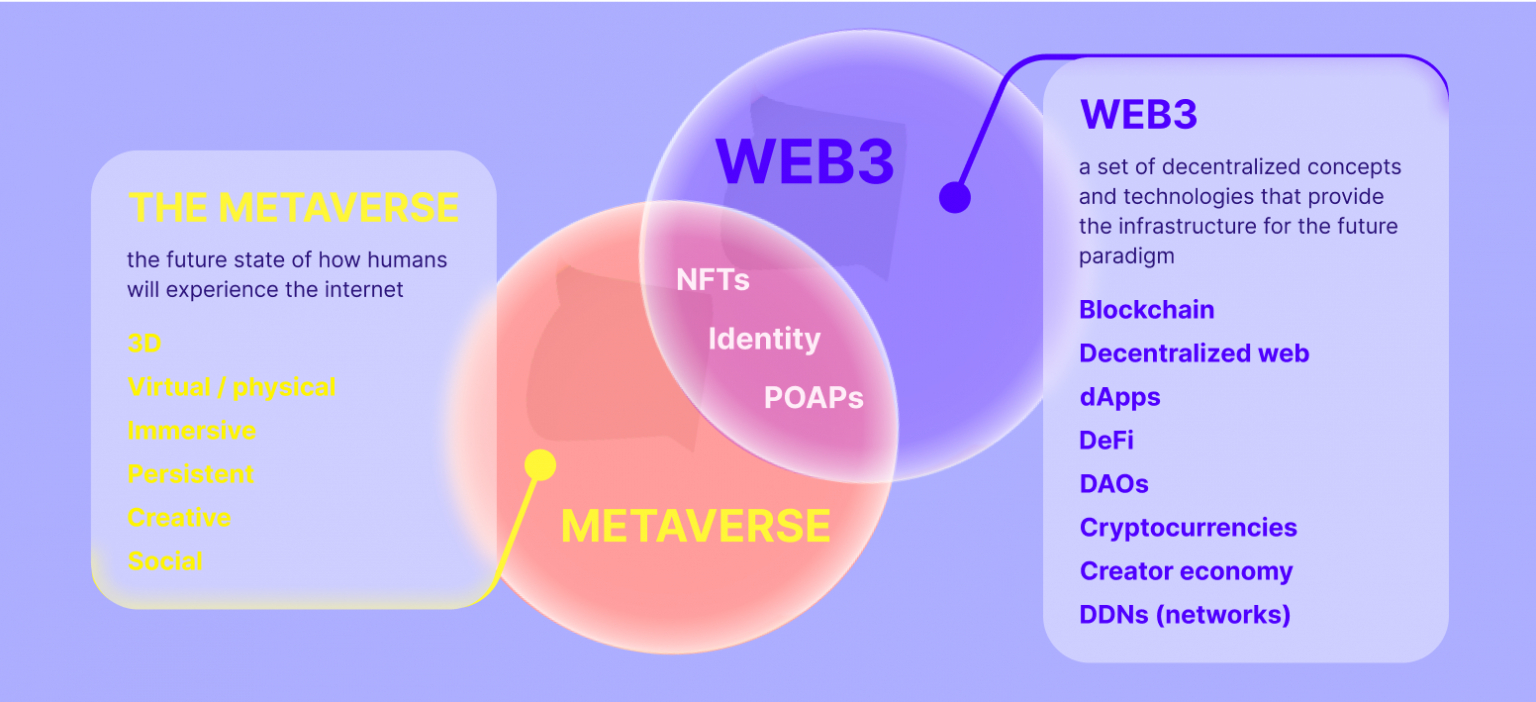The Rise of Web3 Payments: Advantages & Opportunities

Introduction
With the growing popularity of digital technology. Meeting the demands of consumers requires the development of cost-effective and secure payment methods that can bring their visions to life.
In response to this shift, organizations are recognizing the need for change and are reevaluating their payment options. By embracing Web3, which is considered the next phase of the internet, they can offer users a wider range of choices and better control over their savings. Web3's incorporation of blockchain technology, decentralized finance (DeFi), and artificial intelligence (AI) is set to revolutionize the way transactions and payments are processed, resulting in significant changes to the payments landscape.
What is Web3 ?
Web3 is envisioned as a "decentralized web ecosystem," granting users the ability to bypass internet gatekeepers and maintain ownership of their data.
The implementation of web3 blockchain technology would replace the dependency on single servers and centralized databases. Instead, data would be stored on interconnected computer networks through public ledgers.
With a decentralized Web3, the functioning of the Internet would undergo a fundamental transformation. This would eliminate the need for financial institutions and tech companies to act as intermediaries in our online experiences!!
Benefits of using Web3 in online payments
No Intermediate Person
Decentralized web3 payment solutions in Web3 eliminate the involvement of third parties like banks and payment transactions.
Unlike traditional payment systems where financial organizations are always part of the process, Web3's blockchain-based payments through decentralized finance ensure no authority, company, or entity has control over the transactions.
Through blockchain-based payments and decentralized finance, Web3 ensures that no authority, company, or entity has control over these transactions, setting it apart from traditional payment systems.
High Security
Web3 payments benefit from enhanced security due to the decentralized nature of blockchain technology, including DeFi projects.
The implementation of robust algorithms and encryption protocols significantly reduces the risk of potential threats such as hacking, cracking, and fraud.
Additionally, the adoption of modern cryptosystems for storing digital assets incorporates a multi-level protection system, further safeguarding against transaction detail theft and reinforcing overall security.
Customized Solutions
Web 3 has revolutionized digital marketing, allowing payment businesses to collect and utilize consumer data more effectively and sensitively. This leads to the creation of captivating marketing messages that are highly relevant to each individual customer.
As a result, personalized marketing strategies can yield higher engagement rates and increase brand awareness.
Lower Transaction Costs
Currently, digital asset transactions are widely acknowledged as the most cost-effective payment method, both domestically and internationally.
Web3 payments, facilitated by DeFi or blockchain platforms with distributed ledgers, feature lower transaction fees compared to traditional payment instruments. This cost reduction not only benefits businesses adopting this technology but also allows access to a diverse range of blockchains offering payments with minimal fees.
Faster Payment Rate
The distributed ledger technology, integral to the Web3 concept, offers exceptional transaction processing capabilities within any payment system, regardless of the type of payment instrument utilized.
By employing blockchain networks and DeFi platforms, modern crypto payment processors enhance payment speeds significantly, surpassing traditional methods for both local and international transfers in terms of both speed and reliability.
Microtransactions
Web3, the decentralized web, presents a transformative potential through its facilitation of micropayments. Content creators and service providers can directly receive small payments from users, empowering them and opening up new business models and opportunities.
The accessibility of Web3 systems is designed to be inclusive, reaching people worldwide, regardless of their location, financial status, or technical abilities.

source: b2binpay
Why is Web3 the Future of payment platforms?
In the coming years, as more individuals and businesses recognize the advantages of blockchain technology, the future of web3 payments will be high in demand.
DeFi and Blockchain-Powered Payments Accelerate Virtual Currency
The rapid growth of decentralized finance (DeFi) and blockchain-based payment solutions will continue to drive the widespread acceptance and usage of virtual currencies, leading to a reduced reliance on traditional banking systems.
As these innovative technologies gain further traction, more people will turn to digital assets for various financial transactions, harnessing the benefits of faster, borderless, and more secure transfers.
Consequently, the traditional barriers associated with cross-border payments and intermediaries will diminish, making the decentralized financial ecosystem more accessible and inclusive for individuals worldwide.
Rise of Web3 Payment Platforms
Web3 payment platforms are revolutionizing the way businesses handle financial transactions. With these cutting-edge solutions, companies can streamline their payment processes, making sending and receiving funds quicker and more cost-effective than ever before.
Rise of Micropayments
With micropayments, users can bid farewell to the traditional subscription-based systems and embrace a more personalized approach.
Pay-as-you-go streaming services and content platforms will become the new norm, giving consumers the freedom to pay only for the content they truly want to access. No longer bound by monthly commitments, viewers can explore diverse content libraries and cherry-pick their favorites without breaking the bank.
Big Data and Applied Statistics in Web3 Payment Systems
Big data, analytics, and applied statistics empower businesses to uncover actionable patterns and trends, optimizing financial performance and improving customer experiences with precision.
The decentralized nature of crypto technologies, particularly blockchain and smart contracts, enhances security and trust in the ecosystem. Leveraging abundant data enables user-centric personalization, fostering customer loyalty and engagement.
Automated payment procedures
By adopting DAOs, businesses can replace manual payment processes with self-executing smart contracts, ensuring automatic transactions when conditions are met, and reducing errors, and delays.
The absence of intermediaries not only lowers costs but also enhances financial security, as DAOs' decentralized architecture resists hacking attempts and maintains transaction integrity.
Conclusion
Web3 technology is set to revolutionize the future of payments in ways that were previously unimaginable. By leveraging blockchain technology and decentralized networks, Web3 offers a more secure, transparent, and inclusive payment ecosystem. Smart contracts enable automated and trustless transactions, reducing the need for intermediaries and lowering costs for users. Additionally, the integration of cryptocurrencies and stablecoins provides greater financial access to the unbanked and underbanked populations worldwide.
Furthermore, the programmable nature of Web3 platforms opens up possibilities for innovative financial products and services, fostering a new era of financial creativity and inclusion.
Comments
Post a Comment